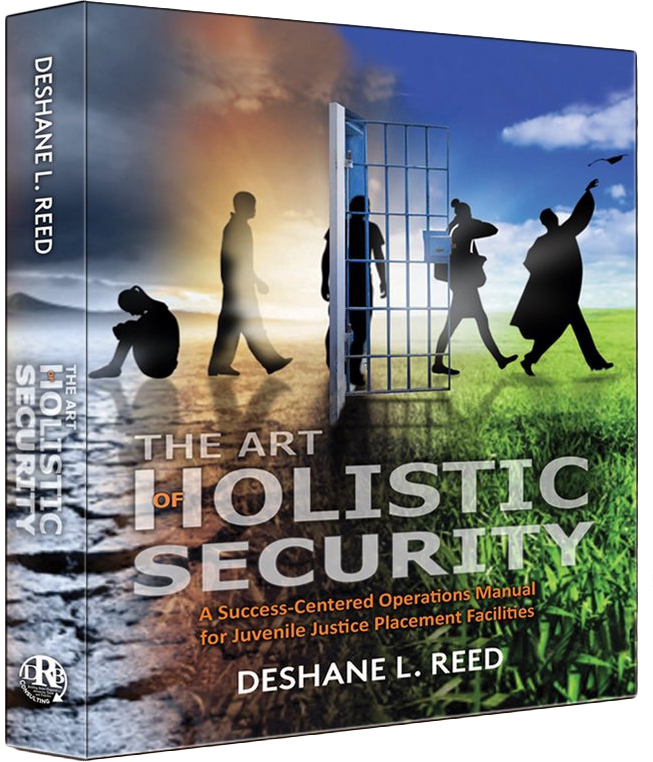We live in a world of best practices. Some call themselves evidence-based best practices (EBP), some are simply promising practices based on evidence from somewhere, and a few are practices grounded in evidence-based research (EBR).
Confusing, eh? Part of the confusion stems from the difficulty and complexity of achieving successful outcomes with youth in custody. In part, the striking effectiveness of recent juvenile detention reforms, particularly JDAI, has removed from secure custody those youth who can thrive in nonsecure alternatives, leaving behind the most at-risk and troubled youth. Confusing has now jumped to complicated and challenging.
Evidence-based practices with their concerns about model fidelity sometimes sound too formulaic for practitioners. The flipside of evidence-based practice is case law-driven practice. Here, author D.L. Reed does a good job of using case law and juvenile rights as justification for certain practices, especially grievances.
If evidence-based practice and case law tell us what to do, the ongoing challenge is how to do those things. The realities of daily life in secure custody settings rarely lend themselves to precise problem-solving, and the reactions of youth never seem to follow the script from staff training handouts.
We continue to search for some field guide that acknowledges that what we tell new detention workers to expect rarely happens, so, in Boy Scouting parlance, we need to be prepared — prepared to respond quickly and effectively to fluid circumstances and changing situations that more accurately characterize secure custody. So, trial and error moves the field slowly in the direction of progress despite the frequent disconnects between new models and their outcomes with youth.
Successful secure custody practices are more an art than a science, and the scarcity of effective, safe and humane conditions of confinement serves as evidence that the art still needs substantial help. In that regard, this book is a basic primer of understandable and useful insights that are helpful to practitioners in implementing effective programs and services.
Reed uses long-standing and straightforward concepts to connect what and why with how questions. Information and explanations follow essential theories of human behavior to support his positive approach to physical and emotional security. While many of the references are to anecdotal research and secondary sources, the utility of the book is just that: The content starts with the assumption that the reader knows very little about the theory and practice underlying Reed’s model. Juvenile care workers sometimes have formal education, sometimes in related fields, and sometimes beyond a year or two of full-time study. For these individuals, the book is a constructive resource.
One example of its utility is the description of a behavior management system. Reed provides a basic introduction of behavioral principles that serves as a refresher for new and veteran staff members. More importantly, he presents the information using multiple adult learning styles. The graduated rewards/privileges continuum is a visual representation of a comprehensive and expansive system that serves as a workable tool for immediate adaptation in a variety of different facilities.
The same applies to the discussions about de-escalation and safety. Appropriately, the book also contains a section on reentry. Without the need to know the intricacies of evidence-based research and references, direct-care staff still have a great affinity for strategies that make sense, are understandable and are effective; and these are precise descriptions of Reed’s book.
Other sample forms and data-collecting materials are also excellent, and the uncomplicated explanations of them raise questions as to why the reader would not implement them immediately. The topics left uncovered suggest the need for a volume 2, and experienced practitioners can generate their own list of deficiencies.
But that is not the point. This book is positive, encouraging, hopeful and above all else relevant. It moves the field forward, emphasizing how to apply Edward P. Mulvey and Carol A. Schubert's concepts of content and process (see Pathways to Desistance research). Employing the wisdom and techniques in this book will improve any secure custody practice regardless of its current status. To the juvenile detention practitioner, you will do better after reading it.
David Roush, Ph.D., has been active in juvenile detention and corrections for more than 45 years. As a facility superintendent, he earned four national awards for innovation and excellence, two from the Office of Juvenile Justice and Delinquency Prevention. A specialist on conditions of confinement, he conducted compliance monitoring for the U.S. Department of Justice. While at Michigan State University, he taught classes on juvenile detention, conducted research and coordinated federally funded training and technical assistance to juvenile justice agencies.

Where can I purchase a copy of the book? I have searched the web with no luck.
The book is available for sale here:
http://drbconsultinggroup.com/products/